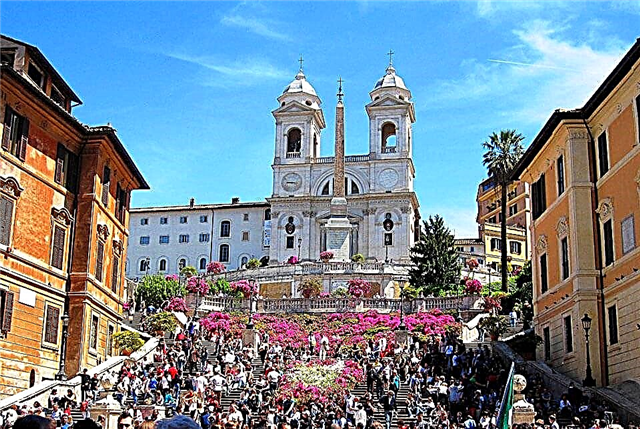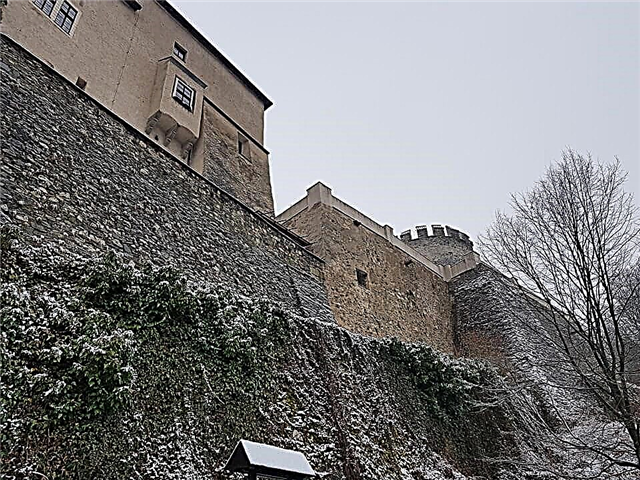The majestic medieval fortresses occupy an honorable place among the popular attractions of the Czech Republic, and are also a national cultural heritage of the republic. One of these structures rises on a high cliff in the valley of the Sazava River, not far from the Benesov region. This grand castle is called Cesky Sternberk. For eight centuries of its existence, the fortress belongs to the old noble family Sternberg, whose descendants still live in it. Today, several halls of the family estate are open to public visits.
History and description

At the beginning of the 13th century, the king of Bohemia from the Přemyslid dynasty, Ottokar II, ordered the construction of a fortress intended to protect the southeastern borders of Prague. The construction was entrusted to the young nobleman Zdeslav Divishovets, who, by the free will of the monarch, became the first owner of the castle. As befits an ancient tradition, each noble family had its own coat of arms. The symbol of Prince Zdeslav was an eight-pointed star, which in German sounds like "stern".
Since the fortification was erected on a mountain ("berg"), it received the name Sternberg - a star on the mountain. Soon, the representatives of the Divishovets clan began to be called Sternbergs in honor of their family estate. The word "Czech" was added to the name of the fortress later, when the princes became the owners of other estates in other provinces. The first building of a Gothic castle dates back to 1241. The building, protected by powerful towers with loopholes, was an impregnable fortress, which was surrounded by a deep gorge and a river. The appearance of large-caliber cannons throwing cannonballs over long distances revealed flaws in the fortification of the castle.
During the Hussite Wars, the then owner of the estate opposed the monarch of the Czech Republic, which led to artillery shelling of the fortress from the side of the royal troops. Firearms inflicted serious damage to the fortifications. A long era of rebuilding the walls began. Gradually, the castle lost its military strategic importance.

In the 17th century, Cesky Sternberg was rebuilt into a baroque palace with luxurious interiors. The Italian artist Carlo Brentano has decorated the castle's vast rooms with pompous stucco moldings and paintings. The middle of the 19th century was marked by the next and final transformation of the external appearance of the fortress. According to the project of the Viennese architect Kaiser, the castle was reconstructed in the Romanesque architectural style with a massive and austere facade. Today, the four-storey fortress with thick walls is an elongated gray building, the curves of which follow the contours of the rock.
After the end of the Second World War, the castle was nationalized by the government of Czechoslovakia. The Sternbergs were asked to stay on the estate and manage the museum, which was set up in the palace. According to the law on restitution, in 1992 the confiscated fortress was returned to the present owner. The current owner of the castle, Zdenek Sternberg, is a direct descendant of a noble family and still lives there.
What to see
The historical interiors of the castle are impressive for their wealth. Fifteen rooms located on the ground floor are available to visitors. A glazed arched gallery, which in the Middle Ages was an open-air courtyard, leads to the fortress's luxurious large apartments.

The most spacious room in the castle is the Knights' Hall. The walls and ceilings of the room are decorated with bas-reliefs created by Italian craftsmen. Antique carved furniture, a tiled fireplace, candelabra in the form of graceful figurines and caskets give the hall a medieval spirit. The walls are decorated with portraits of prominent figures of Bohemia and representatives of the Sternberg family. The room is illuminated by crystal chandeliers weighing more than 300 kilograms.

The hunting hall demonstrates the traditional hobby of the nobles - hunting. Here you can also see a collection of guns, muskets and daggers, as well as trophies obtained by the owners of the castle over many centuries. An exotic exhibit is crocodile skin, spread out on the floor. The ladies' quarters contain elegant furniture with curved legs. On the wall of the room there is an antique mirror associated with a legend. If a woman looks into him, then she will not grow old for ten years. But during these years, a lady should not use other mirrors.

The spacious dining room impresses with numerous fine china and silver cutlery set on the shelves of antique wardrobes and dressers. In the center of the room is a long table set for dinner.

In other aristocratic halls of the castle, furnished with antique furniture, you can see a library, collections of prints, smoking pipes, clocks and children's toys.
The Legend of the Lost Treasure
An interesting legend is associated with a medieval castle. The noble family of Sternberg had a rich fortune. Once, after a profitable sale of one of the many palaces, the prince returned to the family estate with a large amount of money and gave it to his faithful assistant so that he would hide the treasure. The time was turbulent - the castle could be subjected to a robbery attack. The servant responsibly fulfilled the order, but unsuccessfully fell from his horse and died without informing anyone about the place where the treasure was kept.
Opening hours and ticket prices

The castle is open to the public every day, except Mondays. In April and October, Cesky-Sternberg accepts its guests only on Saturdays and Sundays. Tours around the fortress begin from 9:00 to 18:00 (in summer), until 16:00 (in winter). The entrance fee is CZK 150.
Where is it located and how to get there
The castle is located near the town of Vlasim (Benesov district), a 40-minute drive from Prague. It is recommended to take a bus from Prague's Roztyly bus station. Intercity transport will take you to Vlashim, and there you should change to a local bus going to the castle.











